
Heteractis magnifica is a common large and colorful anemone, probably the most conspicuous sea anemone in the Marshalls. Healthy individuals vary in color from yellow to green to brown, often with their tentacle tips tinted with yellow, green or magenta, and occasional individual can stretch out to more than a meter in diameter. They are nearly always inhabited by Amphiprion perideraion and Dascyllus trimaculatus, although several times now we have seen one occupied by an Amphiprion tricinctus, along with the usual complement of A. perideraion. The anemones can be found on both lagoon and seaward reefs, although they seem more common on lagoon reefs and pinnacles. They are generally found adhering to a hard substrate. They rarely move, so individuals can be recognized over time, and it is apparent that these anemones have a pretty long lifespan. One individual that was in an easily recognized spot on a small shipwreck at North Loi Island was in place and already large when we first saw it in 1968. It was still there and healthy when we last saw it near the end of 2016, having survived multiple bleaching episodes.


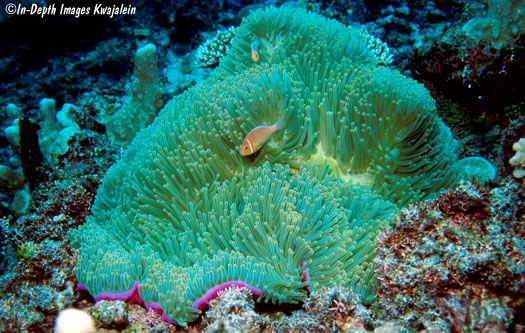
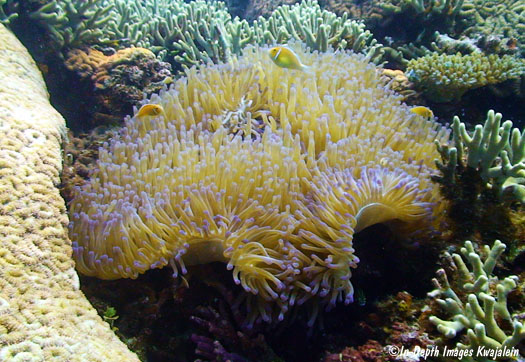


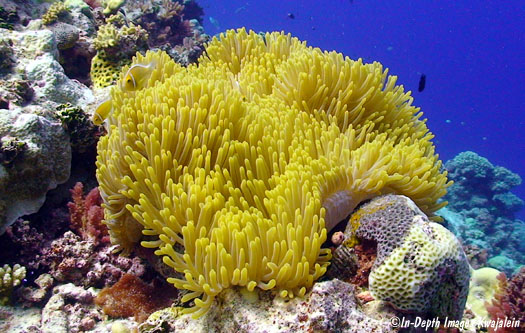
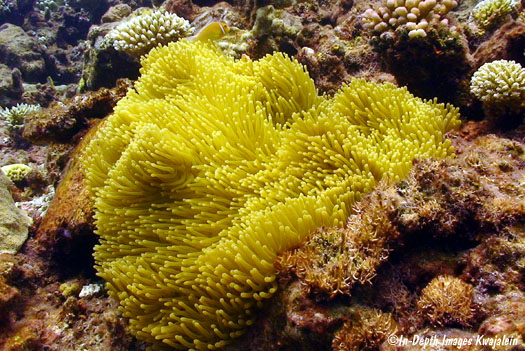
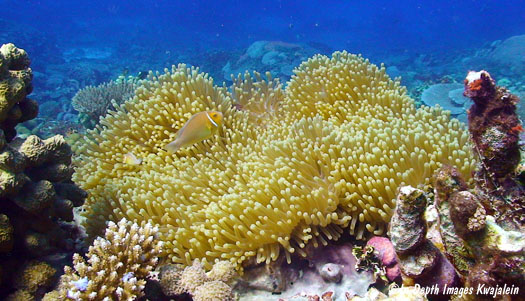

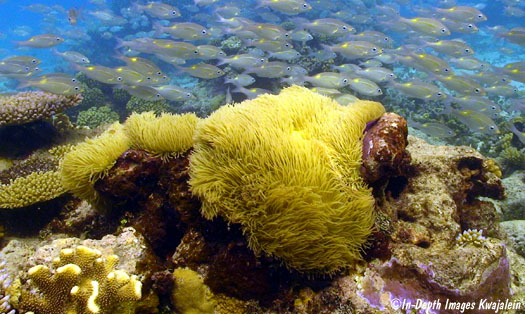




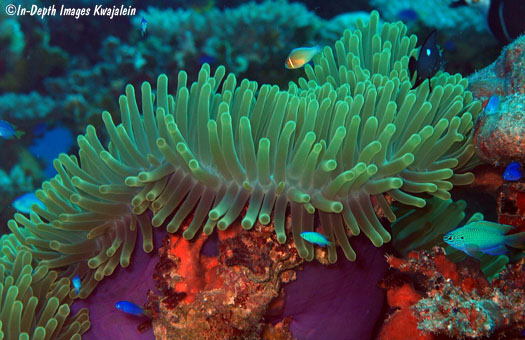

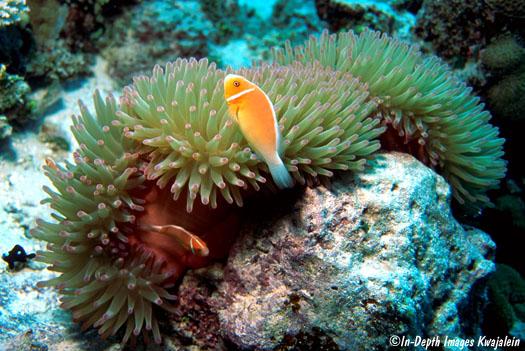


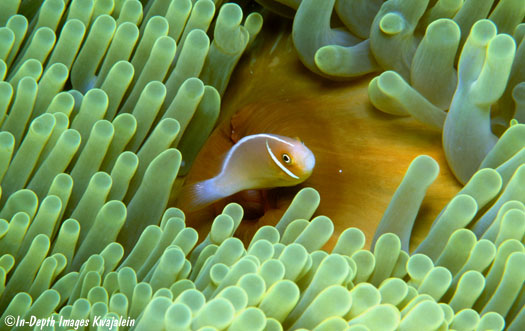
The anemone column (the side of the animal from the base that attaches to the substrate to the tentacle-bearing oral disk) varies in color, ranging from white to pink, orange, or magenta and sometimes streaked with other colors. Curiously, many specimens at Pohnpei, Caroline Islands, had a greenish brown column we did not see at Kwajalein.






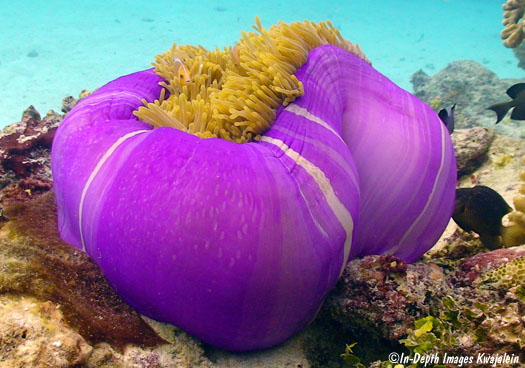
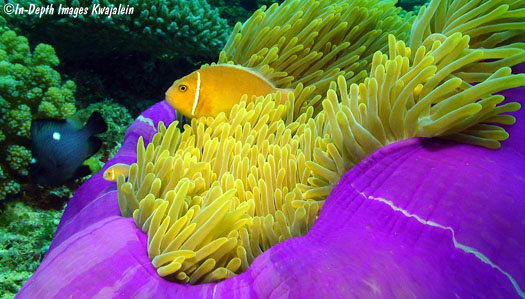
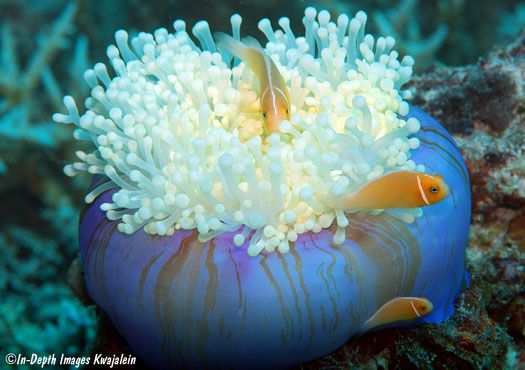


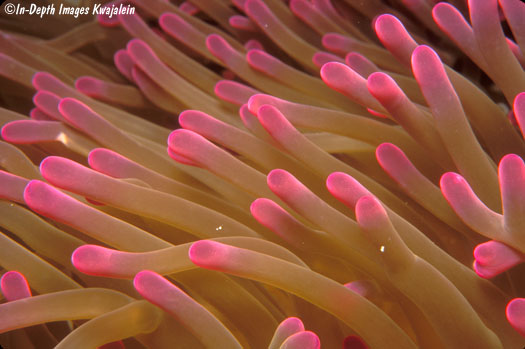

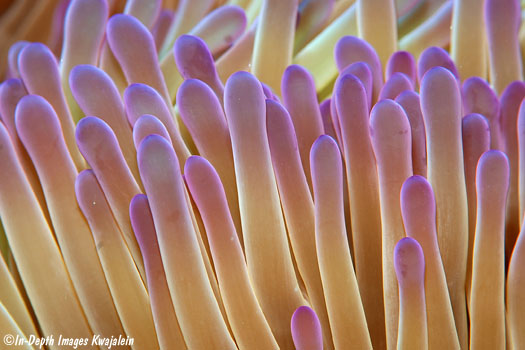
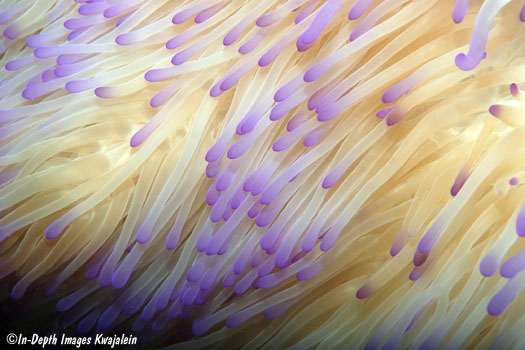
This appears to be a very small juvenile.


Heteractis magnifica is one of the earliest indicators of a coral bleaching event beginning at Kwajalein. When the water temperature gets too warm and stays that way for a period of time, the symbiotic single-celled algae that live within anemone and coral tissue and generally give the host its color are expelled, leaving the still living anemone or coral white. Why the corals lose their algae is still not fully understood, but one speculation is that higher temperatures increase oxygen production in the algae to toxic levels. In any case, the algae symbionts are required for long term survival of the corals and anemones. If the warm water does not last too long, the corals and anemones can be recolonized by the algae and continue to survive. If the bleaching lasts too long, the hosts die, probably by starvation. At Kwajalein, this bleaching happens when the water reaches 30°C (86°F). In all our years diving in the Marshalls, starting in the 1960s with some in the 70s and early 80s, and again from 1988 onward, we first witnessed widespread coral bleaching in 2009, the first time we recorded the water reaching 30°C. It happened again in 2013, 2014, 2016, 2017 and 2018. (We have no information on what happened since then.) Many corals and anemones have died in these repeated events. Clearly the ocean is getting warmer, and it is having a serious effect on coral reefs. Below show some examples of bleaching or fully bleached anemones, and click this link to see a lot more examples on the Heteractis magnifica bleaching pages. The first photo below shows a pair of anemones in the process of bleaching, with their tentacles whilte but a trace of brown left in the disk.
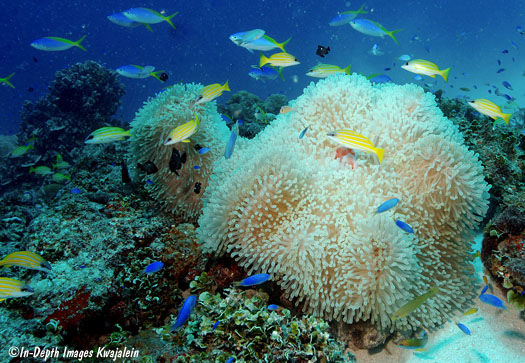
Sometimes when fully bleached, the underlying pigment is bright yellow instead of pure white, but the yellow is much brighter and whiter than the normally yellow specimens.
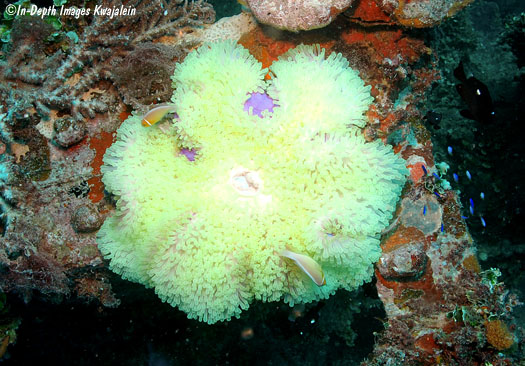

Sometimes the tentacle tips retain some color, yellow, green or magenta, which is part of the anemone animal itself and not provided by its symbiotic algae.

Created 28 July 2018